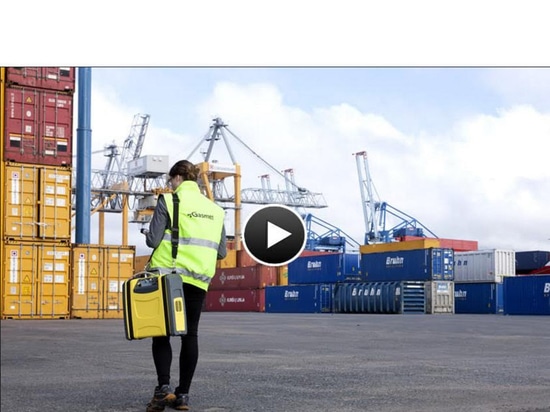
#Product Trends
New world record for mercury emissions monitor
Gasmet Technologies is delighted to announce that its Continuous Mercury Monitoring system (CMM) is the first instrument to be certified for monitoring at the low levels required by industry and regulators.
“This is extremely important news,” says Matti Haapala, Gasmet’s Application Development Manager. “In the past the low concentration levels in industrial emissions have represented a challenge to monitoring technology, and instruments have been unable to monitor at the low levels that are required.
“This announcement means that, at last, monitoring technology is available that will enable effective regulations to be implemented in the fight against global mercury pollution.”
The Gasmet CMM has successfully completed EN15267-3 testing using CVAF (Cold Vapor Atomic Fluorescence) technology for the analysis of Mercury. The CMM now provides the world’s lowest EN15267 certified range for measurements of Mercury. The instrument is certified for operation across a number of different ranges up to 1000 µg/m3, but importantly, the lowest range is 0 to 5 µg/m3.
Meeting regulatory requirements
The award of an MCERTS EN15267 QAL 1 certificate means that the Gasmet CMM meets the monitoring range requirements of EU Directives, and is considered suitable for use on waste incineration and large coal-fired combustion plant applications. It also presents an opportunity for effective mercury emissions monitoring at other types of combustion plant.
Large combustion plants (LCPs) are combustion plants with a total rated thermal input equal to or greater than 50 MW. The Commission Implementing Decision (EU) 2017/1442 established best available techniques (BAT) conclusions, under Directive 2010/75/EU for LCPs and the BAT conclusion was published on 17th August 2017 in the Official Journal of the EU and will come into effect with a four year transition period.
The LCP BREF (Best Available Technology Reference document) includes new BAT-associated emission levels (BAT-AELs) e.g. for mercury, and helps European countries to lower the environmental impact of around 3500 LCPs.
“The new ELVs (Emission Limit Values), set by national authorities, will be based on BAT-associated emission levels. The BAT AEL-ranges will be the reference for setting the ELVs, taking into account fuel type, combustion technology and other relevant conditions,” says Haapala.
“According to the new BAT conclusions, Mercury should be measured continuously in the LCPs with a thermal input equal to or greater than 300MW. Also, ammonia needs to be measured continuously if SCR (selective catalytic reduction) and/or SNCR (selective non-catalytic reduction) are used,” he adds.
Looking forward, Rami Vuorinen, Chief Technology Officer at Gasmet, says: “Now that proven technology is available for continuous mercury monitoring at low levels, the operators of combustion plants have an opportunity to implement control measures and demonstrate effective mercury emissions control. It is clear that stricter emission limits will be in place, as described in the LCP BREF document, so process operators can now take steps to ensure that their monitoring is future-proof.”
The Gasmet CMM is a complete emission monitoring system designed to meet the regulatory requirements for continuous mercury measurement at different combustion sources. The new certification also confirms that the Gasmet CMM offers the lowest measurement uncertainty of any other continuous mercury monitor. The system also has a low maintenance requirement and has been designed for the most demanding industrial measurement conditions.
Further information on the CMM and on mercury monitoring, including a Mercury Monitoring White Paper, are available from www.Gasmet.com.





